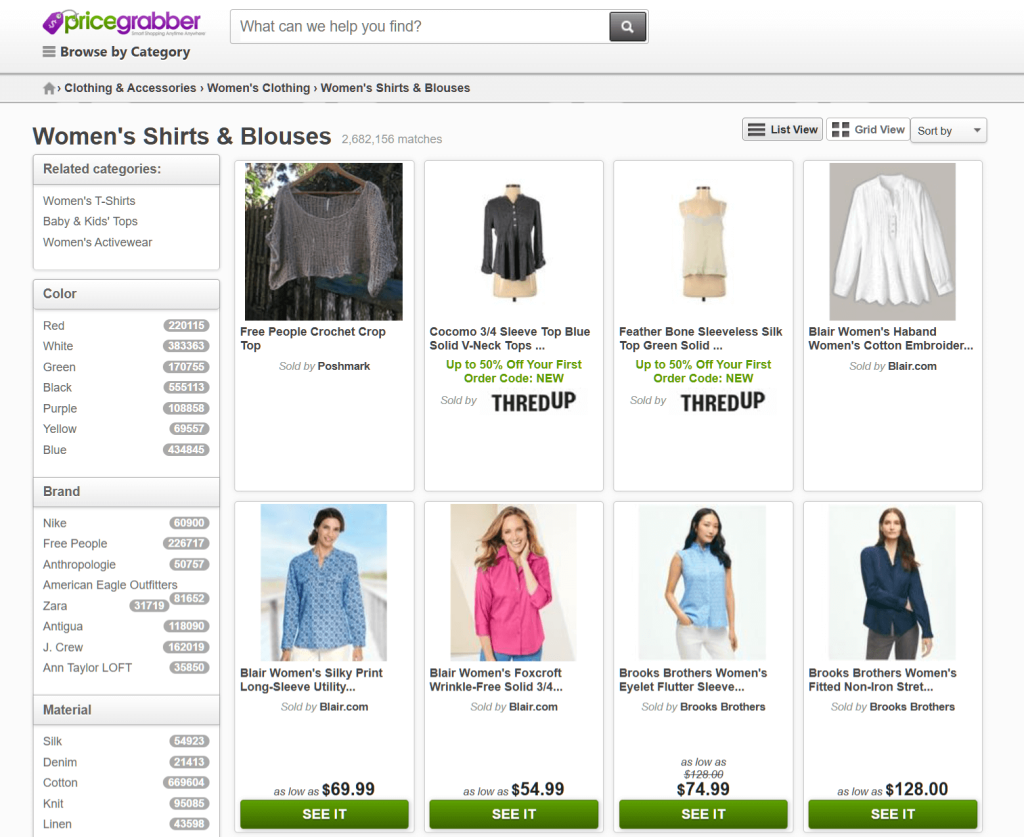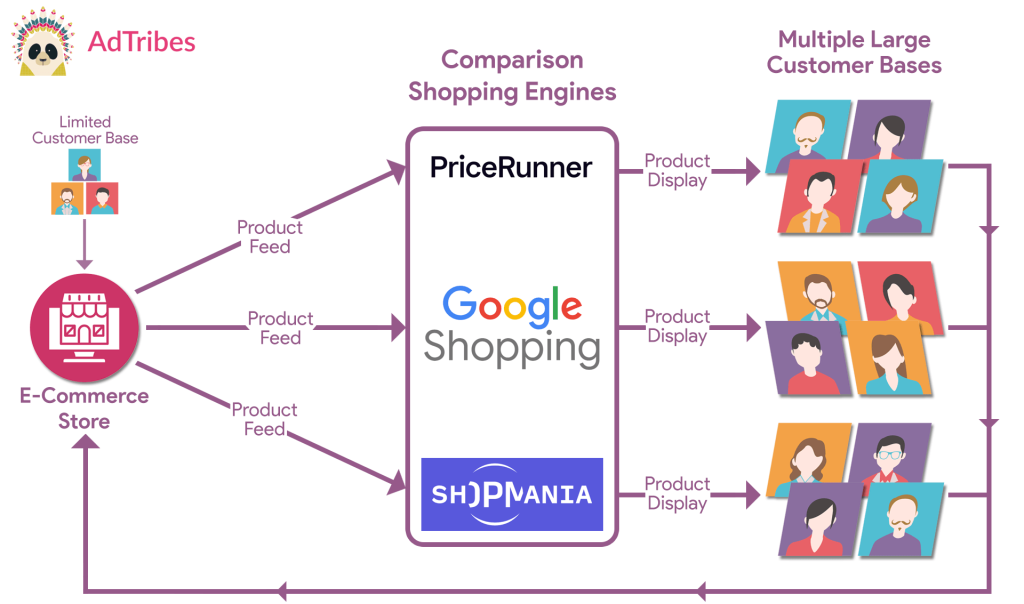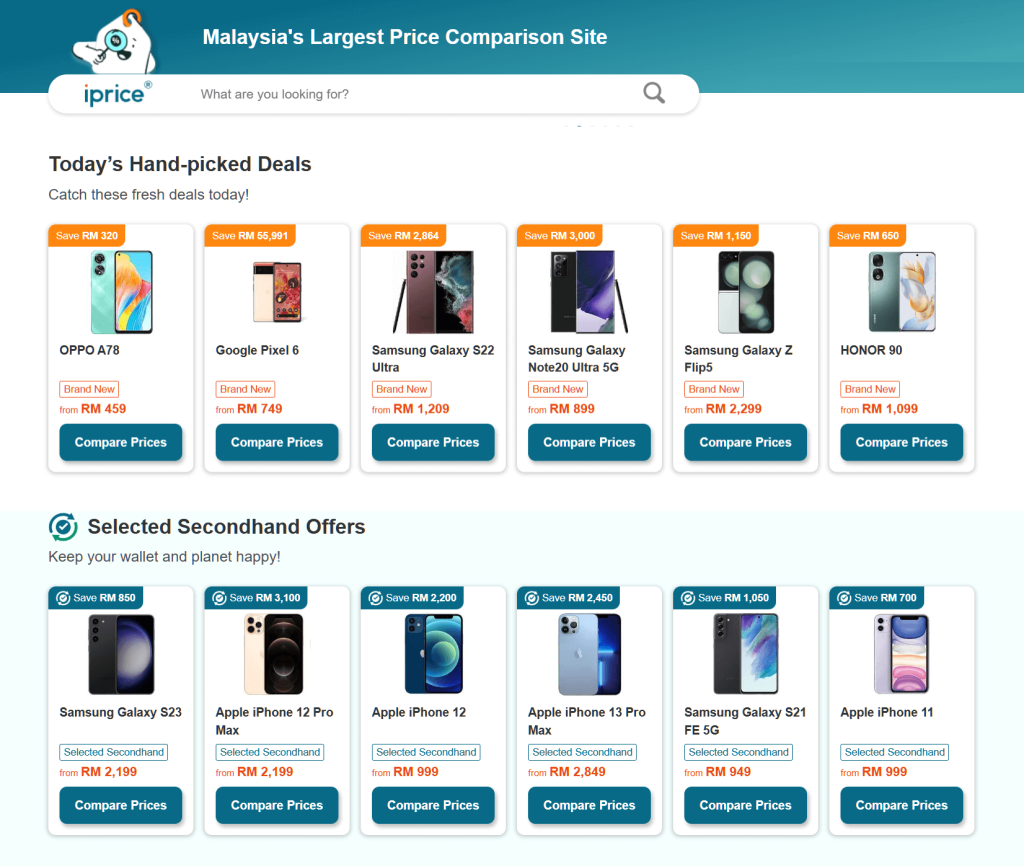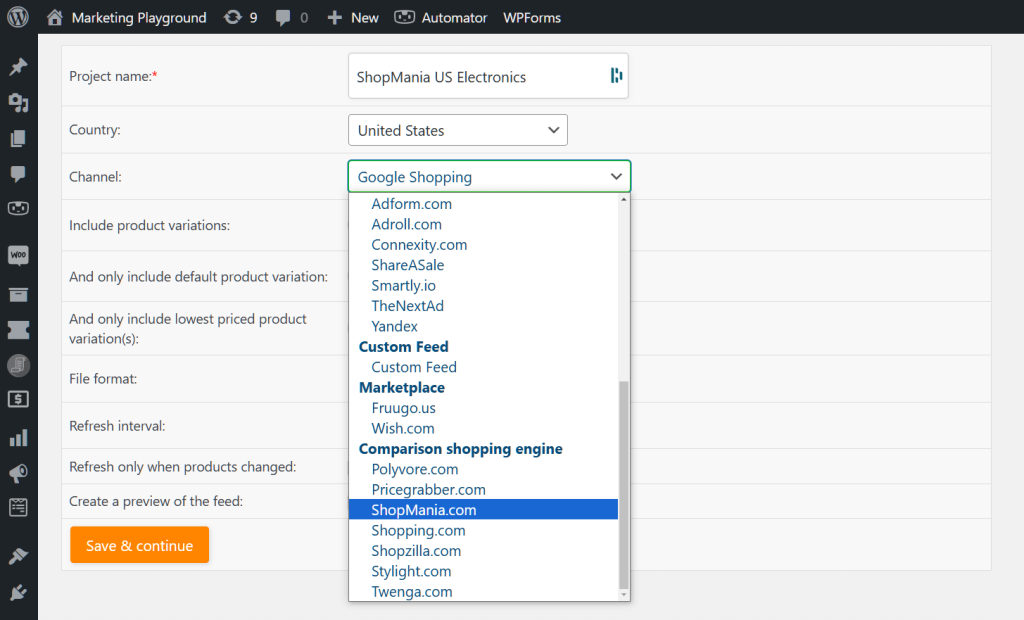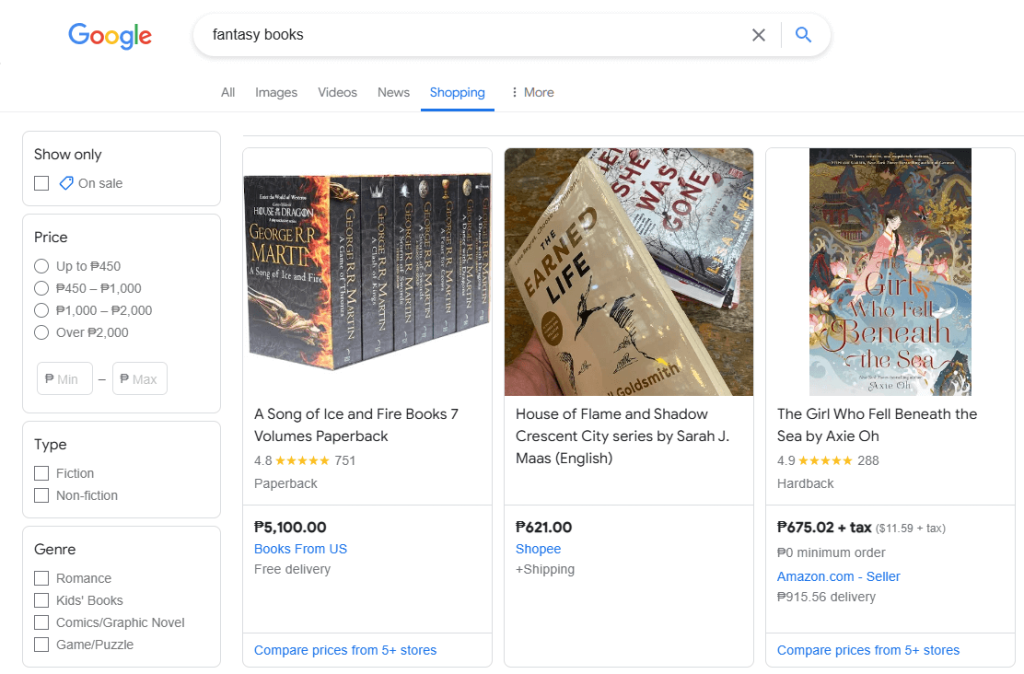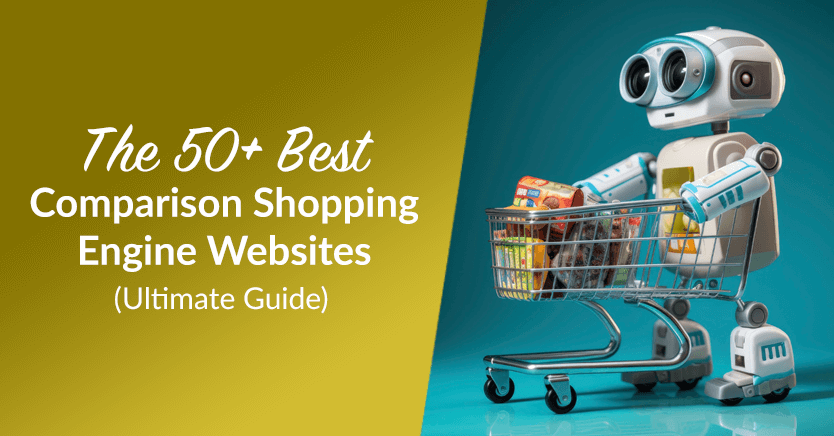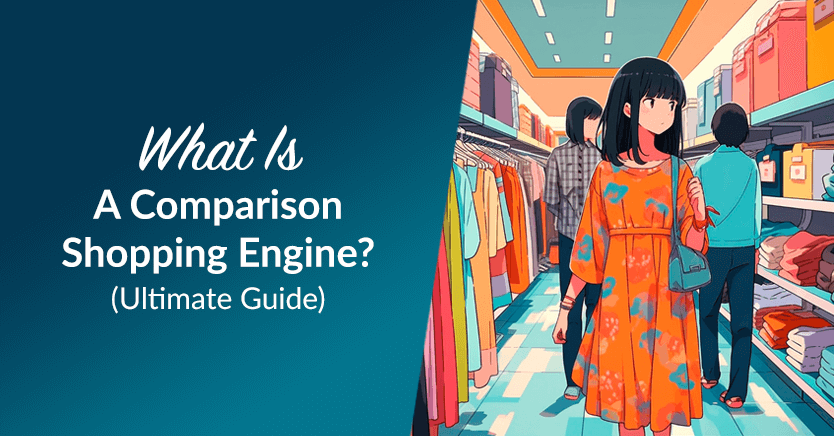
What is a comparison shopping engine? We’ve seen many businesses miss out on its benefits, not realizing how much it can help them grow. However, for those reading this article, it offers the potential to boost your platform’s visibility, traffic, and revenue.
A comparison shopping engine, or CSE, is a website where shoppers can compare products from different stores in one place. Therefore, when it features your products, it puts them in front of more potential buyers, helping your business reach more people.
Today, we’ll address key questions about comparison shopping engines. This will help you determine if they are the right tool for optimizing your product exposure and enhancing your online sales strategy.
So let’s get started!
Table Of Contents
- I. What Is A Comparison Shopping Engine?
- II. What Are The Benefits Of Comparison Shopping Engines?
- III. What Is Comparison Shopping Engine Monitoring?
- IV. What Strategies Can Optimize Your ROI From Comparison Shopping Engines?
- V. How Do You Pick The Right Comparison Shopping Engine For Your Business?
- VI. What Is A Comparison Shopping Engine's Relation To Product Feeds?
- VII. How Do You Create A Product Feed For A Comparison Shopping Engine?
- VIII. What Is The Top Comparison Shopping Engine?
- Conclusion
- Frequently Asked Questions
I. What Is A Comparison Shopping Engine?
A comparison shopping engine is an online platform that lets users compare products from different sellers.
Typically, these platforms gather product details from various online retailers, providing users with information such as prices, features, availability, and customer reviews. The goal is to help consumers make smart buying decisions by presenting them with options from multiple sources in one place.
However, it’s also highly beneficial for e-commerce businesses to submit their products to CSEs for display. In fact, we’ve seen many businesses succeed by selling across multiple CSEs, including Google Shopping and Bing Shopping.
Are you wondering, “What is a price comparison website?” Basically, it’s just another term for a comparison shopping engine!
1. What is the purpose of comparison shopping engines?
The main purpose of a CSE is to let people compare prices and features of products from different online stores. This helps them find the best deals and make smart choices when buying.
2. How do comparison shopping engines work?
CSEs collect product information from many online stores and show it all in one place.
Stores send in details like prices, pictures, and descriptions. Then, the CSE organizes everything so shoppers can easily compare products.
When someone clicks on a product they found on a CSE, they’re taken to the store’s website. The store usually pays the CSE a small fee for each click. Stores can also use the CSE to see what’s working and make smarter decisions.
3. What is a price comparison website’s impact on consumer behavior?
A CSE affects how people shop by making them more sensitive to prices, helping them make smart choices, and making it more likely that they compare prices before buying something.
4. What is a price comparison website’s importance to retailers?
A CSE is important to sellers because it helps more people see their products, brings the right kind of visitors to their websites, and gives helpful information about what customers like and what other sellers are charging.
5. What is a price comparison website’s benefit for small businesses?
A CSE helps small businesses by making them more visible to a bigger group of people. This brings more of the right shoppers to their products and helps them compete with bigger stores by showing off their good prices and special items. Which brings us to…
II. What Are The Benefits Of Comparison Shopping Engines?
Comparison shopping engines offer many benefits to businesses and consumers alike:
1. Price comparison
Shoppers can easily compare prices from different stores. This allows them to get the best deal on products they want.
2. Convenience
Shoppers can view and compare multiple sellers’ products in one spot. Thus, they don’t need to search different websites for product information and prices.
In other words, CSEs save the consumer’s time and grant them an easier shopping experience.
3. Product variety
CSEs enable shoppers to explore a broad array of products and brands. As a result, consumers often find choices they might not have thought about before. After all, what is a comparison shopping engine without giving customers lots of options?
4. Informed decisions
CSEs often come with detailed product information, customer reviews, and ratings. Therefore, Bing Shopping, Google Shopping, and the like help shoppers make smarter choices about what to buy.
5. Competitive advantage for businesses
Typically, CSEs are big platforms that show products from many stores to lots of customers. So, when you list your products on a CSE, you can reach more people. This extra visibility can bring more visitors to your website and help you sell more.
You can also send your product listings to many CSEs, which lets you show your products to different kinds of customers!
6. Marketing insights
CSEs provide information about how customers behave and what’s popular in the market. This helps businesses improve their marketing.
For example, this information can show which of your products sell the most and which competitors’ items customers like better than yours. With this knowledge, you can improve your product selection and prices to make your items sell better.
In other words, it’s crucial to monitor comparison shopping engine campaigns. Which brings us to…
III. What Is Comparison Shopping Engine Monitoring?
Comparison shopping engine monitoring means tracking and analyzing how well your products do on different CSEs. Usually, this includes:
1. Price monitoring
This means keeping track of how prices for certain products change across different CSEs.
2. Availability monitoring
Basically, this means checking if products are available and in stock on different platforms.
3. Competitor analysis
This entails examining how competitors list their products, their pricing strategies, and their promotional activities on CSEs.
4. Performance metrics
What is a comparison shopping engine’s use if you don’t track your products’ performance on it? Thus, observe important numbers like how many people click on your products (click-through rates or CTR), how many of those clicks turn into actual purchases (conversion rates), and how easily customers can find your products on CSEs.
5. Content accuracy
This means ensuring that product information (descriptions, images, specifications) remains accurate and up-to-date across all platforms.
When you watch these factors closely, you can make your products show up better on comparison shopping engines. This helps your products get noticed more, so you attract more customers and make your business stronger in the online market.
IV. What Strategies Can Optimize Your ROI From Comparison Shopping Engines?
What is a price comparison website’s use to a seller if it doesn’t make them any money?
Thus, to optimize your return on investment (ROI) from CSEs, consider the following strategies:
1. Optimize product data
Use high-quality images and clear descriptions to ensure your product listings are accurate and detailed. Basically, this improves visibility and attracts more informed shoppers.
2. Competitive pricing
What is a comparison shopping engine without competitive pricing?
To stay competitive, you should regularly update prices. Keep in mind that CSE users often prioritize cost, which means offering competitive pricing can increase click-through rates and conversions.
3. Strategic bidding
Learn how to use and take advantage of CSE bidding systems effectively. Then, assign budgets to products that earn more profit or need more attention to attract customers.
4. Promotions and discounts
What is a price comparison website without special deals and discounts? Thus, offer special deals, discounts, or promotions exclusively through CSEs. After all, this encourages shoppers to buy, thus increasing the number of sales.
This strategy is particularly effective during major sales events like Christmas, Black Friday, Halloween, etc.
5. Monitor performance
Regularly check data like click-through rates, conversion rates, and ROI. Then, change your strategies based on this information to get the best results.
With the right tool, you can easily monitor comparison shopping engine campaigns across multiple channels. For example, AdTribes, a product feed manager for WooCommerce, comes with full Google Analytics integration, allowing you to analyze how well your campaigns are performing.
6. Enhance user experience
Make the shopping experience smooth from start to finish. Therefore, simplify purchasing for customers, enhance landing pages, and streamline checkout processes. And what is a comparison shopping engine without mobile compatibility? Thus, it helps to pick CSEs that perform seamlessly on smartphones.
7. Explore multiple platforms
Use several CSEs to reach different groups of people. Then, find out which groups increase conversion rate most effectively.
When you use such strategies, you can boost your e-commerce venture’s visibility on comparison shopping engines. Consequently, this helps you improve your ROI.
V. How Do You Pick The Right Comparison Shopping Engine For Your Business?
Here are some tips on how to choose the best comparison shopping engine for your business:
1. Identify your target audience
What is a comparison shopping engine’s point if it doesn’t draw customers to your e-commerce platform?
Thus, you must understand where your potential customers are likely to shop. Then, choose a CSE that is popular among your target demographic.
2. Evaluate costs
Compare the fee structures of different CSEs. For example, some may charge per click, while others may have a flat fee or commission-based pricing. Then, ensure the costs align with your budget.
3. Assess traffic and reach
Look at CSEs’ traffic statistics and user base. Basically, a platform with higher traffic can potentially bring more visibility to your products.
4. Analyze integration capabilities
Check if the CSE integrates smoothly with your e-commerce platform. After all, easy integration can save time and reduce technical issues.
5. Review product categories
Ensure the CSE supports the categories relevant to your products. Some CSEs specialize in specific niches, which might be beneficial if your products fall into those categories.
6. Consider user experience
Look at the user interface and experience of the CSE. A user-friendly platform can enhance the shopping experience, leading to higher conversion rates.
7. Check reporting and analytics
Choose a CSE that offers detailed reporting and analytics. This data is crucial for monitoring performance and making informed decisions.
8. Read reviews and case studies
Look for reviews or case studies from other businesses in your industry. This can provide insights into the effectiveness and reliability of the CSE.
9. Test multiple CSEs
Don’t hesitate to try out a few different CSEs to see which one performs best for your business. After all, testing can help you identify the platform that provides the best ROI.
When you carefully evaluate the above factors, you can select the comparison shopping engine that best meets your business needs and goals.
VI. What Is A Comparison Shopping Engine’s Relation To Product Feeds?
What is a comparison shopping engine without product feeds? Basically, not much!
Product feeds are structured files, typically in XML or CSV formats, that include comprehensive details about each product. Businesses create and manage these feeds, ensuring they contain information like product titles, descriptions, prices, availability, and unique identifiers.
Product feeds are extremely important to comparison shopping engines. In fact, product feeds serve as the main method through which product information is shared and updated on these platforms.
To be specific, here are the major ways product feeds and comparison shopping engines are connected:
1. Data transmission
Retailers submit their product feeds to comparison shopping engines. This way, feeds enable CSEs to display accurate and consistent information about various sellers’ products.
2. Updating and syncing
CSEs regularly update their product listings based on changes in the product feeds. This ensures that pricing, availability, and other product details remain current across the CSE platform.
3. Optimization
Optimizing product feeds—by ensuring accurate and compelling product information, using relevant keywords, and adhering to CSE-specific guidelines—can improve visibility and performance on comparison shopping engines.
In short, product feeds are the backbone of how products are listed and managed on comparison shopping engines. They enable the process of comparison and help consumers make informed purchasing decisions.
VII. How Do You Create A Product Feed For A Comparison Shopping Engine?
To create a product feed for a comparison shopping engine, you need a powerful product feed plugin such as AdTribes’ free Product Feed Pro or premium Product Feed Elite.

What is a comparison shopping engine’s creation process like? Simply put, it’s simple and quick!
Basically, when given the option to pick the distribution channel to submit your product feed to, simply pick your preferred comparison shopping engine.
Of course, the process requires the completion of other steps.
Thankfully, we have an easy yet comprehensive guide to creating product feeds for CSEs and other distribution channels. To learn more, check out our article:
What Is A Product Feed And How Do You Create One? (Ultimate Guide)
VIII. What Is The Top Comparison Shopping Engine?
What is a price comparison website that most online shoppers know about? None other than Google Shopping, which is among the world’s largest and most influential CSEs.
Google Shopping is a service provided by Google. It gathers product listings from numerous e-commerce websites, enabling shoppers to easily compare product prices, features, and reviews. Retailers can list their products by creating a Merchant Center account and uploading product data, including images, prices, and descriptions.
Integrated with Google services like Google Search and Google Ads, Google Shopping results often appear at the top of search engine results pages. Furthermore, Google Shopping operates in multiple countries around the world, making it a significant player in the global e-commerce landscape.
In addition, this CSE is also designed to work well on mobile devices like smartphones and tablets. This lets shoppers enjoy the convenience of shopping anytime, anywhere.
For these reasons, Google Shopping is a great option for online stores that want to increase their visibility, get more visitors, and boost sales.
Other notable CSEs include:
- Bing Shopping
- PriceGrabber
- NexTag
- Kelkoo
- Shopping.com
- Yahoo Shopping
Do you want more examples of awesome CSEs? Then check out our article:
The 50+ Best Comparison Shopping Engine Websites (Ultimate Guide)
Conclusion
What is a comparison shopping engine? It’s a platform for comparing products from different sellers, empowering businesses to expand visibility, drive traffic, and increase sales.
To discover how a comparison shopping engine can help your business, familiarize yourself with the answers to the following questions:
- What is a comparison shopping engine?
- Do comparison shopping engines offer benefits?
- What is comparison shopping engine monitoring?
- What strategies can optimize your ROI from comparison shopping engines?
- How do you pick the right comparison shopping engine for your business?
- What is a price comparison website’s relation to product feeds?
- How do you create a product feed for a comparison shopping engine?
We hope we’ve answered the question, “What is a comparison shopping engine?” If you’d like to learn more, reach out to us and let us know; we’d be happy to hear from you!
Frequently Asked Questions
What is a comparison shopping engine?
A comparison shopping engine is a website or tool that lets people compare products from different stores all in one place. It shows prices, features, and reviews so shoppers can find the best deal fast.
What is the purpose of comparison shopping?
The main goal of comparison shopping is to help people make smarter buying choices. Instead of going store to store, they can see everything side by side and pick what’s best for them—usually saving time and money.
Is it important to monitor comparison shopping engine campaigns?
Yes, it’s important to monitor comparison shopping engine campaigns. If you’re a store owner, keeping an eye on your campaigns helps you see what’s working and what’s not. You can catch problems like wrong prices or missing products before they cost you sales. It also helps you spend your ad money wisely.
How do you monitor comparison shopping engine campaigns?
You can use tools that track your product listings, ad spend, clicks, and sales across different shopping engines. These tools show you what needs fixing and where you can do better. Some even alert you if something goes wrong, so you can fix it fast.
What are examples of top comparison shopping engines?
Good examples of comparison shopping engines include:
- Google Shopping: Shows products from many stores and lets shoppers compare prices, reviews, and shipping.
- Bing Shopping: Helps users compare products from multiple stores directly in Bing search results. It shows prices, images, and ratings so shoppers can quickly find the best deal.
- Shopzilla: Lists deals from different retailers and helps people find the lowest prices.
- PriceGrabber: Lets users compare prices, read reviews, and see product details all in one place.
- Kelkoo: Popular in Europe, it compares prices across stores and shows ratings.
- Yahoo Shopping: Gathers listings from many stores so shoppers can quickly compare options.
- Idealo: A big name in Europe for comparing prices and product details from trusted shops.
